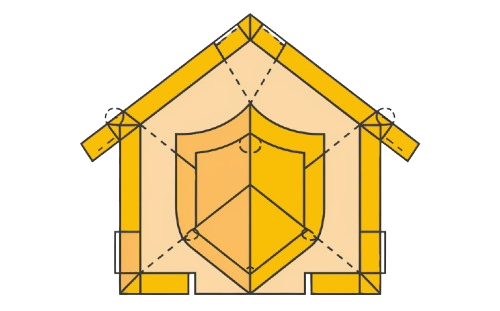Air Sealing
Seal Air Leaks for Improved Energy Efficiency
Many homes experience issues with air leakage, leading to uncomfortable drafts and higher energy use.By creating an airtight seal in the key areas of your home’s thermal envelope, we can help you stop air leakage and boost energy efficiency.
Air Leakage Problems
Why Should I Invest In An Air-Seal?
High Energy Bills
When air leaks, so does heat. This leads to a hot house in the summer and a freezing home in the winter. Adding an air-seal supports your HVAC system.
Poor Air Quality
If air can leak, air pollution can leak with it. In southern PA, that means the smells of manure, factory pollution, and burnt trash can sneak into your home.
Pest Infestation
Insects and rodents often use areas of air leakage as pathways into your home. An airtight seal cuts off these entry points.
Home Discomfort
Air leakage contributes to fluctuating temperatures in your home. With an air-seal, you can more easily condition your air because it stays inside.
Sealing Air Leaks to Stop Heat Loss
Heat loss from air leakage is a common issue in many homes, leading to wasted energy. Sealing air leaks is a cost-effective solution that works better than just adding more wall insulation. Attic air sealing and weatherization are key steps in this process, helping to fix insulation issues and stop the loss of conditioned air. By addressing these areas, you can improve indoor comfort, reduce your overall energy consumption, and lower your utility costs.
Where You Should Add an Airtight Seal
Adding an air-seal to your thermal envelope, the outer shell
of your home, helps separate your conditioned space from the
outside environment, making your home more energy-efficient.
Sealing the Attic or Roof
The attic is a major source of air leakage. In summer, hot air pushes down into your living area, while in winter, the heat you pay for escapes through the roof. Sealing this space with an air-seal helps keep your home comfortable year-round.
Sealing the Exterior Walls
In a new construction home, it’s a great chance to add an airtight seal to the exterior walls. Without this, air can exchange uncontrollably, much like leaving a door or window open, causing unnecessary heat loss.
Sealing the Basement Rim Joists
The basement rim joists and band boards are common spots for air leakage. Where the masonry meets wood, cold air often gets sucked into your home during winter. Adding an air-seal here can block these drafts effectively.
Sealing the Crawl Space
A crawl space can have similar air leakage issues as a basement. It’s often musty and moldy, and the air from the crawl space mixes with the air inside your home. Sealing this area helps stop the spread of musty air and prevents mold growth.
Key Advantages of Air-Sealing
Encapsulated Attic
Lower energy bills
Improved home comfort
Better indoor air quality
Fewer pest problems
Reduced heat load on ducts
Less risk of ice damming
Air-Sealed Rim Joists
Reduced energy bills
Enhanced comfort levels
Cleaner indoor air
Fewer pest issues
Stops cold air drafts
Encapsulated Crawl Space
Decreased energy usage
Increased home comfort
Cleaner air quality
Prevents pest entry
Reduces cold air drafts
Why Seal Your Attic for Better Insulation?
Adding an attic air seal improves your home’s insulation by slowing down the rate of heat transfer in and out of the house. Framing cavities, which are spaces between the studs, are usually filled with materials like fiberglass, chemical foam, cellulose, or mineral wool.
These materials work to trap air, acting like the air gap in a thermos that resists heat escape and heat intrusion, keeping the temperature stable inside.
To achieve the main goal of insulation, we need to stop heat transfer effectively. A high R-value measures how well an insulation material can resist conductive heat transfer, like when heat moves from a stovetop to a pan. However, heat also travels through convection, circulating in the air, and through radiation, which is why you feel the warmth of the sun even in winter. While most insulation can handle conduction, not all can slow down convection or radiation. By adding an air-seal, we make the insulation more effective in blocking all types of heat transfer.
Get a Free Quote for Air Sealing
If you’re looking to improve your home with air-sealing, now is the perfect time to reach out. Contact us today to request your free quote. We will go over all options, ensuring you get the best fit for your project needs.
Fill out this form to get your quote for air sealing
